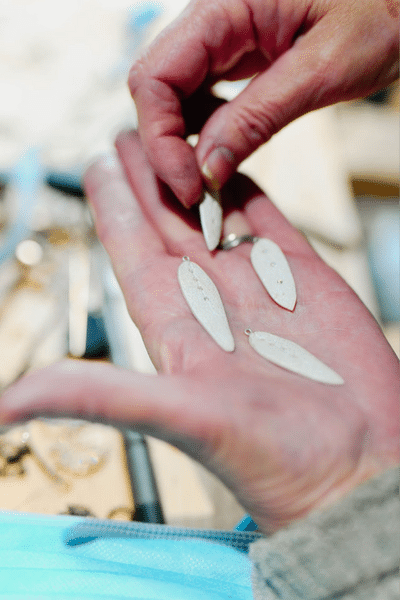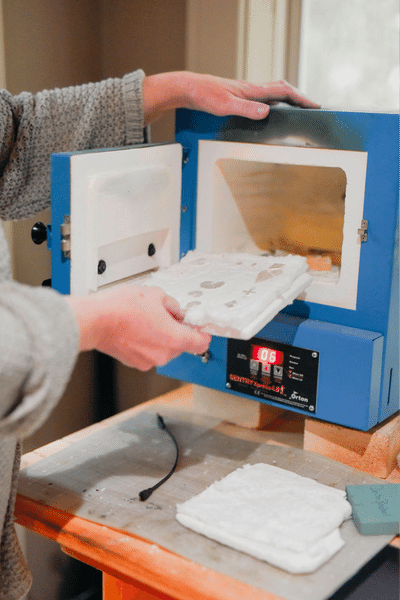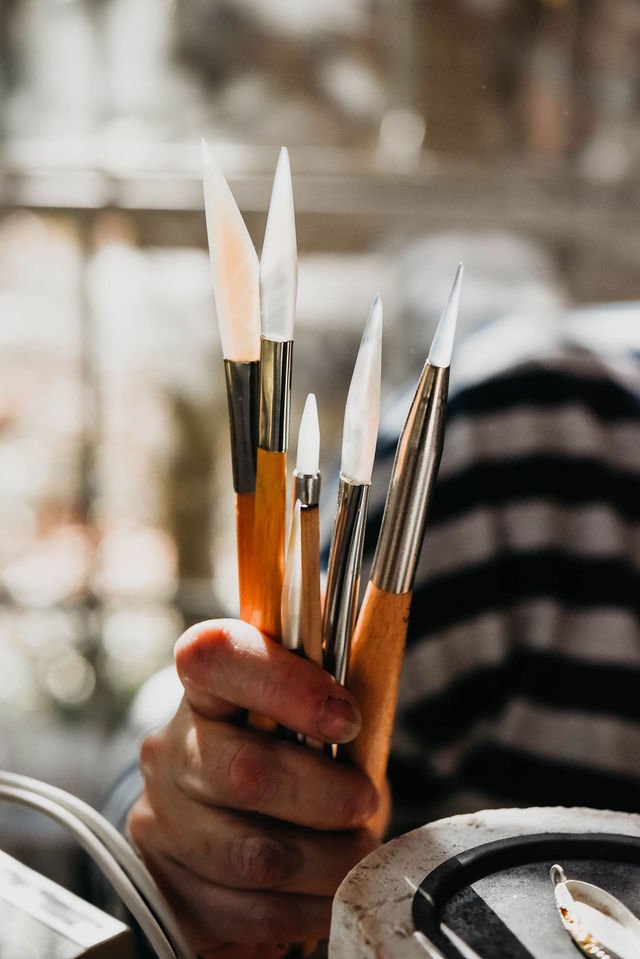The Ancient Korean Art of Keum-Boo
It’s believed that the ancient art of keum-boo (pronounced “kim boo”) originated between 500 BC and the early part of the first millennium AD in Korea, making it nearly 3000 years old.
This gilding technique fuses pure 24 karat gold leaf with silver, iron, steel or copper resulting in a luxurious gold finish. Keum-boo has been used widely in Japanese, Chinese and Western cultures to guild jewelry and other metal objects.
The Process of Keum-Boo
By first depleting the silver or other metallic surface with oxidation, then adding the piece to an acid or a salt bath, a purer form of silver (or other metal) remains. Pure gold easily fuses to the resulting silver with heat and pressure due to their similar atomic structure, creating a permanent diffusion bond.
The Delicate Craft of Keum-Boo Jewelry
To begin, Melissa Orsini shapes the piece of jewelry that she intends to create, such as a sage leaf earring or a necklace pendant. She then textures the piece to add interest and topography. Next, she fires the piece in the kiln, which transforms the metal clay into silver, bronze or copper depending on the type of metal clay used.
Once a piece is fired, Melissa heats the piece until it is discolored, which indicates the metal alloy has oxidized, then delivers it to the pickle, or a bath of acid or salt.
The pickling stage is crucial to removing the oxidized metal and creating a purer silver surface to which the gold leaf is applied. This process may be repeated several times to create the purest silver surface possible.
When the piece of jewelry is deemed pure enough, Melissa heats the piece and applies the 24 karat gold leaf, which adheres to the surface and fuses, forming a permanent bond.
Shop Keum-Boo Jewelry
Stay Connected
Follow Melissa Orsini Jewelry on Instagram

















